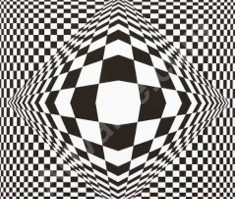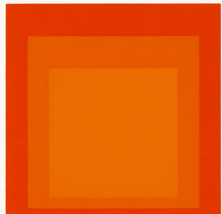op & pop explosion




With the advent of Pop Art , the screen print was revived and given new energy with visual imagery that literally replicated popular commercialism. No longer was the fancy word serigraph useful or needed . Artists were producing screen prints, and they were bold, huge, and multicolored. These prints flaunted photo processes, and they were truly American in content and in process. Andy Warhol’s Campbell’s soup can images of 1962 probably did more to revitalize the medium than any other artwork since the screen prints of Velonis and his group in the 1930s. Warhol, with his early career as an advertising illustrator; James Rosenquist, with his experience as a billboard artist; and Roy Lichtenstein, with his knowledge of commercial printing processes— all brought huckster conceptualization into “high-art” statements. Their new imagery used the medium so inventively, without restrictions, that the screen print again became a vehicle for serious, sustaining art. Paralleling the Pop Art of the 1960s was Op Art, a new abstract art that concerned itself with illusion, perception, and the physical and psychological impact of color. Sometimes only black and white were used, but usually hard-edged juxtapositions of saturated, often complementary colors were made to create a strong three-dimensional illusion of color, form, space, and movement on the two -dimensional surface. This work had its roots in the visual experiments of Josef Albers and Victor Vasarely. When Vasarely in Europe began to create screen-printed images, Op artists in the United States soon translated their images into the medium as well. In addition to the Op artists , Minimalists like Ellsworth Kelly and Brice Marden have found the accuracy and simplicity of the medium highly adaptable for their work. Other artists, such as Lucas Samaras, Claes Oldenburg, and Robert Rauschenberg, have been intrigued by the innovative printing possibilities of the medium. Working both two- and three-dimensionally, they have experimented with mixed media and kinetic ideas, incorporating photo processes quite frequently into their work. And there are also figurative artists such as Alex Katz, Will Barnet, and Ernest Trova, who have exploited screen printing because it is relatively easy to use numerous colors and to achieve the transparencies and nuances of flesh tones. The process has come a long way from the tentative serigraphs of the early 1930s. The esthetic concerns are continuing to expand, suggesting that the screen print will remain an important means of expression for the last decade of the twentieth century and the ensuing decades of the twenty-first century.


influence of pop and op art



James Rosenquis
Roy Lichtenstein
Victor Vasarely

Joseph Albers

